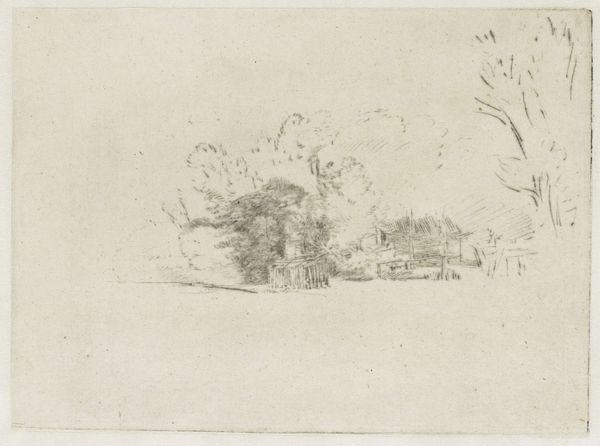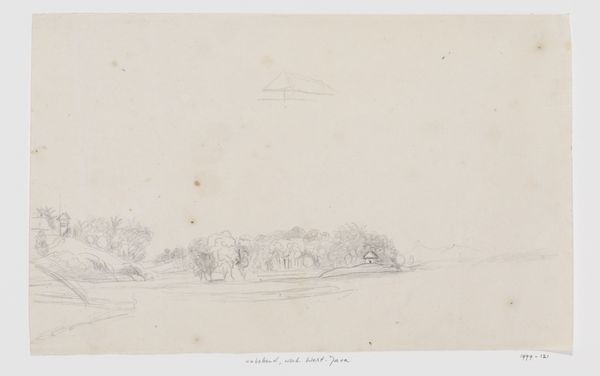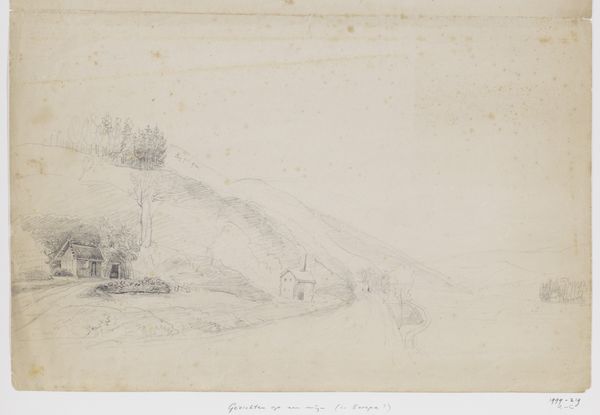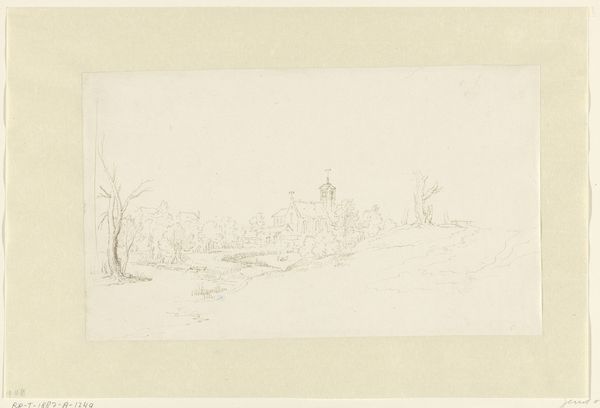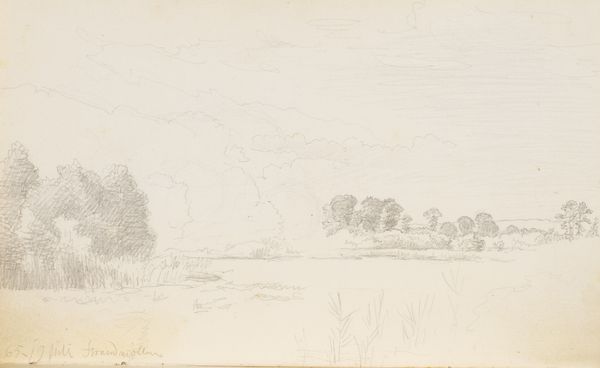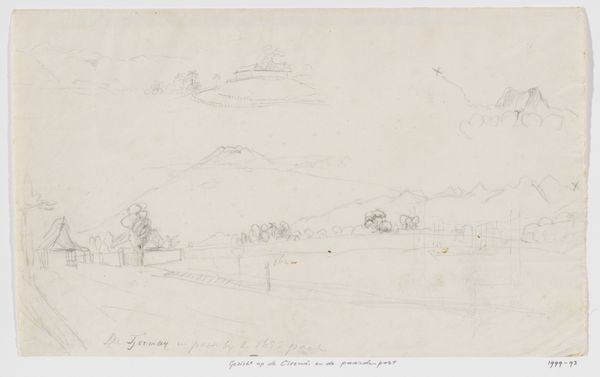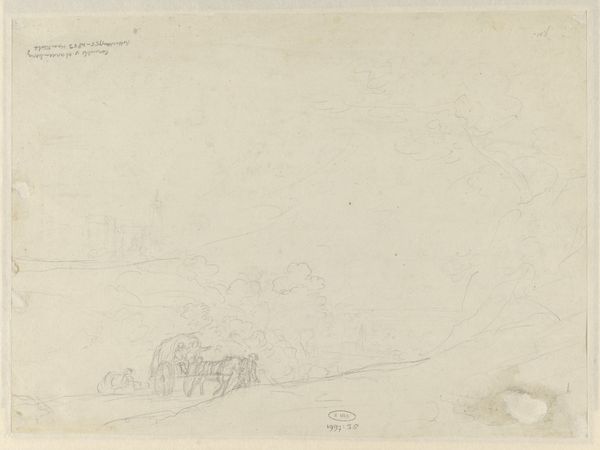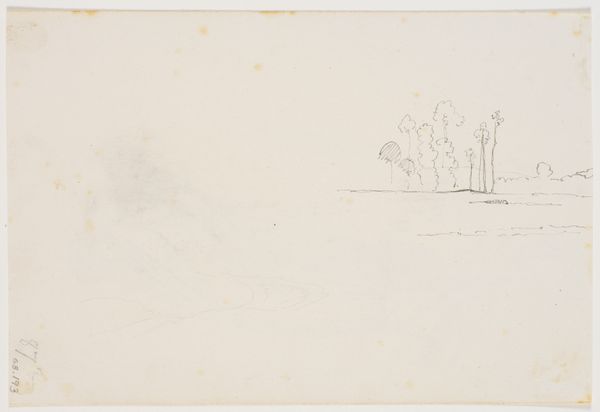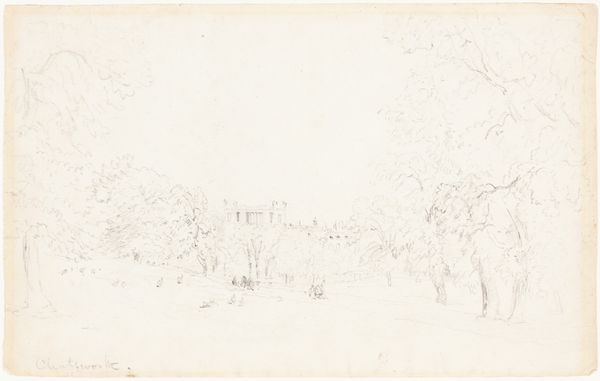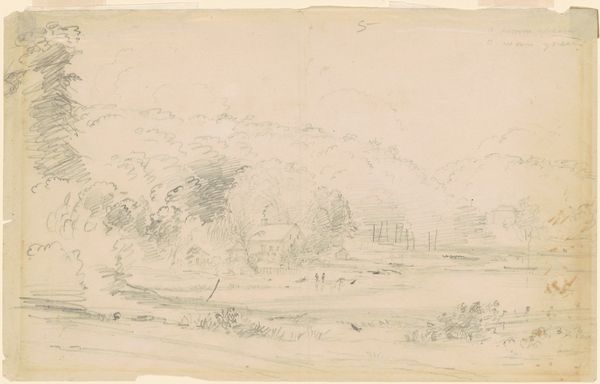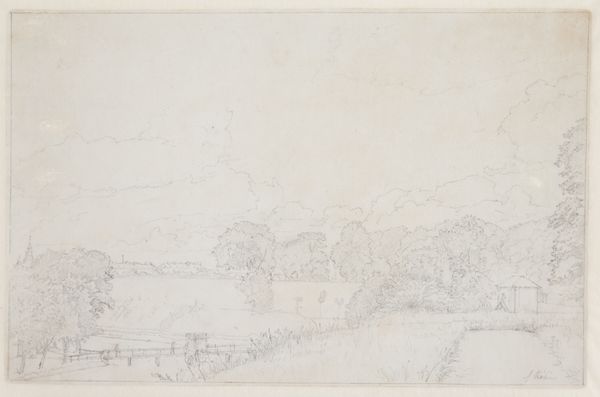
Gezicht op vijver en tuin en achterzijde van het paleis Buitenzorg (vóór 1834), West-Java c. 1816 - 1834
0:00
0:00
adrianusjohannesbik
Rijksmuseum
drawing, pencil
#
drawing
#
pencil sketch
#
landscape
#
etching
#
romanticism
#
pencil
#
watercolor
Dimensions: height 234 mm, width 301 mm
Copyright: Rijks Museum: Open Domain
Curator: This pencil and watercolor work by Adrianus Johannes Bik, created sometime between 1816 and 1834, is titled "View of the pond and garden and rear of the palace Buitenzorg (before 1834), West Java." Editor: It's surprisingly delicate for a scene depicting colonial power. There's a lightness to the rendering, almost as if Bik is trying to soften the impact of the imposing architecture by focusing on the surrounding nature. Curator: Observe how the architectural elements are meticulously delineated yet are rendered with a subtle ethereal quality. The pencil lines articulate form, while the light watercolor washes add a sense of depth, adhering to compositional conventions of the period. Editor: Yet, framing it that way feels like erasing the realities of the Dutch East Indies. That “ethereal quality” speaks more to a romanticized, perhaps even deliberately obscured, vision of colonial life. The drawing naturalizes a power dynamic where that palace, Buitenzorg, was at the heart of the colonial administration. Who benefits from the scene's gentle aesthetics? Curator: The very deliberate rendering of perspective directs the eye and constructs an almost ideal representation of space; note how the artist's emphasis falls upon balance through its calculated geometry and visual harmony. Editor: And what’s carefully not rendered? Whose labor sustained the estate? Where are the indigenous people, the displaced, and the dispossessed? This idyllic view serves as a document of power, not of simple observation. Curator: Nonetheless, there is a charm to how light filters through the leaves, the interplay between the horizontal of the water and the vertical of the foliage which makes it undeniably visually compelling. Editor: Compelling, perhaps, if divorced from its context. But consider what that aesthetic sensibility costs when it romanticizes an exploitative history. The image aestheticizes occupation. Curator: Your perspective highlights its ideological implications, which perhaps might broaden our interpretation of pictorial form and space. Editor: Exactly. Hopefully our observations underscore how crucial it is to recognize historical forces at play, complicating how we perceive art.
Comments
No comments
Be the first to comment and join the conversation on the ultimate creative platform.
